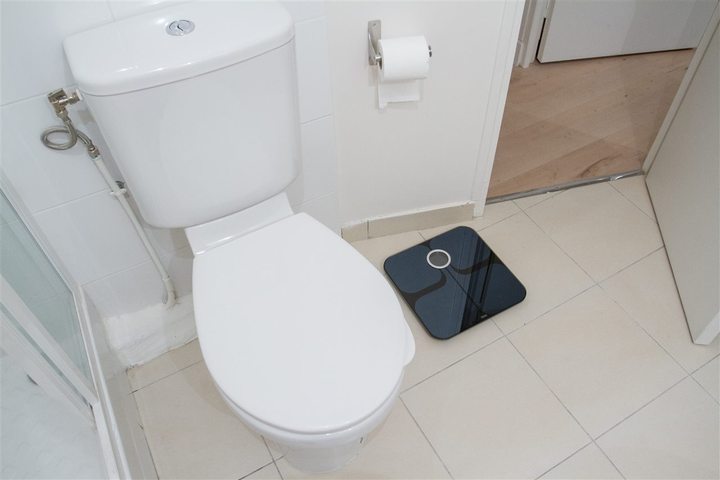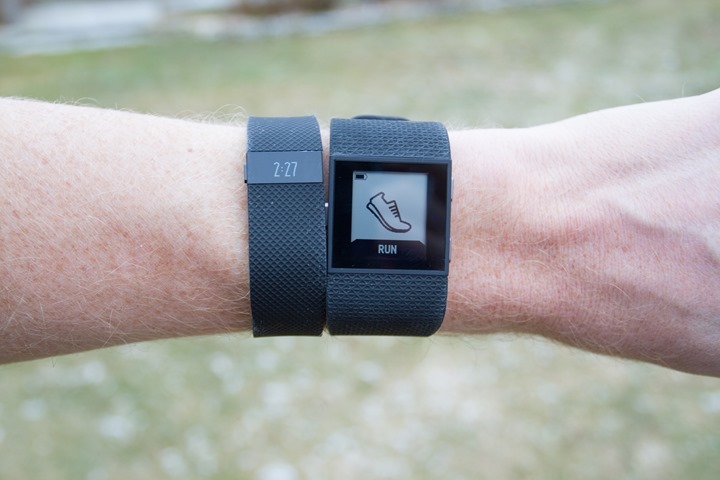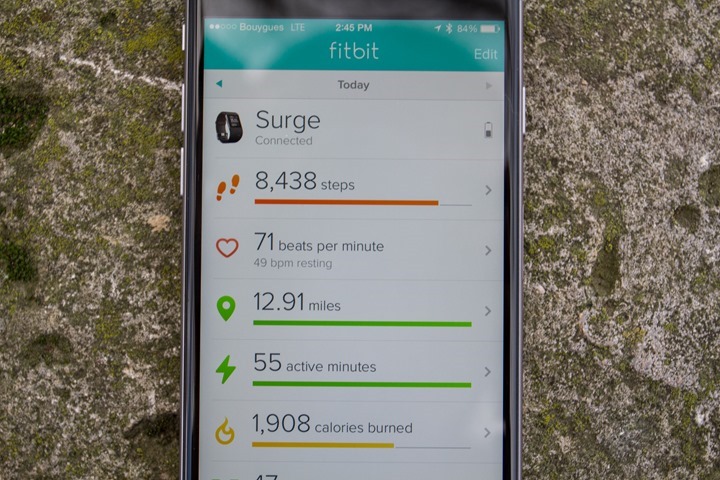It’s been a few months since Fitbit announced a trio of products, including their first GPS watch – the Fitbit Surge. This joined two other activity trackers, the Fitbit Charge and Charge HR within the announcement (my review of the Charge & Charge HR is here). What’s made the Surge a bit more special than the average GPS tracker is the optical heart rate recognition, built into the unit itself.
Fitbit released a handful of units into the market mid-December, but otherwise hasn’t been shipping much until the last week or two. Thankfully my (self-paid) order came through back just before Christmas and I’ve been wearing it almost 24×7 since.
Lastly, at the end of the day keep in mind I’m just like any other regular athlete out there. I write these reviews because I’m inherently a curious person with a technology background, and thus I try and be as complete as I can. But, if I’ve missed something or if you spot something that doesn’t quite jive – just let me know and I’ll be happy to get it all sorted out. Also, because the technology world constantly changes, I try and go back and update these reviews as new features and functionality are added – or if bugs are fixed. So – with that intro, let’s get into things.
Unboxing:
This will be a rare outdoor unboxing edition, mostly due to me being on the road at the time of receiving the product and wanting to get started immediately with it.
The Fitbit Surge box unfolds seemingly never endingly with a lot of inspirationally motivating text.
Inside you’ll crack it open and find the Surge sitting in the middle:
Within that you’ll essentially find four items of note: The Fitbit Surge, the USB charging cable, a USB Bluetooth stick for your computer, and then the manual. For most of you, you’ll forever ignore both the USB stick and the manual.
By the end of this post though, you won’t need the manual:
Next is the USB charging cable. Plug this into a USB port and it’ll charge the Surge (this isn’t for data transfer). Also note that the Fitbit Charge, Charge HR, and Surge all have different cables (the number of tiny little connectors differs on each).
There’s also a small USB adapter for doing Bluetooth transfers to PC or Mac. For most of you, you’ll be using smartphone sync instead.
Finally, there’s the Fitbit Surge itself:
On the back is the optical sensor and charging port, but we’ll get into that in more detail a bit later.
With everything unboxed – let’s get cooking on comparing sizes.
Size Comparisons:
First up is a look at the GPS watch sizes. In this case I’ve put together a broad range of units, mostly based on price point and the inclusion of optical sensors.
Here’s the rundown of what you see above, from left to right: Garmin FR920XT, TomTom Runner Cardio, Epson Pulsense 810, Polar M400, Basis Peak, Fitbit Surge, Garmin FR220, Garmin FR15, Mio Fuse, Microsoft Band, Fitbit Charge HR, Vivosmart.
As you can see, it sits in the middle and isn’t terribly big or small, just sorta…normal.
Where you can see some of the differences in size is at the comparison to the Fitbit Charge HR and Charge:
In addition to comparisons of watch sizes to other units, note that the Fitbit Surge does come in three sizes: Small, Large and X-Large. The size of the watch body however does not change. It’s only the size of the band that changes in size.
In my case, I went with the generic ‘Large’ option, which seems to fit me pretty well. I know many of you want to know how and whether it fits on The Girl, who’s a bit more petite than I at 5’2”. In her case I didn’t have another Surge in a ‘Small’ size. But I’ll add in a shot of it (the larger size) on her wrist when I return later tonight back home.
Note however that the only practical difference is that the band is smaller, so that it fits better. But that is important because the optical heart rate sensor requires that the unit isn’t bouncing around on your wrist for good accuracy.
Day to Day Activity Tracker:
Fitbit has always been an activity tracker company from the start, thus given that – it seems like as good a place to start as any.
The Fitbit Surge continues with the same functionality found in all other Fitbit models as far as step, distance and general calorie tracking throughout the day. It also contains stair tracking showing the number of floors you’ve climbed.
These metrics can easily be shown on the watch at any time by just swiping left or right on the display:
They are then synchronized to your smartphone using the Fitbit app. With that you can display all the same information, but in a much more colorful and graphically pleasing environment.
This information is of course also available on their website as well using a desktop computer.
When it comes to step accuracy I find it inline with other units I’ve been using concurrently with it. But at the same time – don’t expect any two activity trackers to show the same exact number of steps at the end of the day. Every company implements slightly different algorithms in their devices. Those algorithms vary based on where on the body the activity tracker is (i.e. wrist or belt clip), and are designed to minimize false-positives.
But with that in mind, sometimes you’ll get steps while taking a shower…or while washing the dishes or perhaps even on a bumpy car ride. Really, that’s sorta normal. There is no ‘perfect’ device out there. There are perhaps good and bad, but nothing perfect that will give you exactly the number of steps you took and not one step more or less.
So with that in mind, if you end up having a couple hundred (i.e. 100-200) extra steps at the end of the day from random activities, don’t fret it. If on your 10,000+ step goal the 100-200 steps is making the difference, then I’ll be blunt: You’re doing it wrong. These devices are (with today’s technology) more about trending, and about motivating you to move. If every day it’s showing ~15,000 steps, then you likely did approximately that much. Meanwhile, if it’s showing ~2,500 steps, then more than likely you simply need to be more active. And finally, if you’re worried about the few extra false-steps, then just set your goal slightly higher. Problem solved.
Sleep Tracking:
The Fitbit Surge will track your daily sleep data automatically without any additional button pressing. This is worthwhile noting because some of the activity trackers out there (i.e. Garmin devices) require you to manually tell it you’re about to go to sleep, and manually note when you wake up. To me…that’s silly.
So I rather like that the Surge just does it automatically without any additional work on my part. And from my testing it works fairly well for me. When I go to sleep it seems to nail the falling asleep and waking times within a few minutes, and then easily just pipes all that data to the app (it’s not visible on the Surge itself).
This data is also then available online via the website:
From a basic sleep tracker standpoint, the Surge is definitely one of the better ones out there – on par with the sleep accuracy I see with the Basis watch and better than many other units on the market.
Continuous 24×7 Heart Rate Monitoring:
The Fitbit Surge and Fitbit Charge HR both contain 24×7 heart rate monitoring. They do this through the optical sensor seen on the back of the unit. This sensor measures your heart rate by emitting a green light that shines through your skin to your capillaries, where it then measures the blood flow using the optical receptor within the sensor also on the back of the unit.
When it comes to optical HR recognition, there tends to be two categories of implementations: Those that work well for sports, and those that work well for day to day steps/sitting/etc… What Fitbit is attempting to do here is to combine those. This section will focus on the ‘day to day’ piece, whereas later in the post I talk about the accuracy during activities.
With both the Surge and the Charge HR, the green optical sensor is on 24×7, it never turns off (though you can turn it off in the settings if it annoys you). It’s as part of this 24×7 monitoring that it captures your heart rate continuously, and records that to the watch for uploading to the app and the site.
Additionally, anytime you connect the phone app to the device, you’ll see your heart rate shown live on the phone:
Next, on your phone you can see the trending for resting heart rate (which is essentially what this is), as well as see the daily trends of your heart rate:
So what about accuracy? From what I’m seeing, the accuracy for the general just sitting around aspects of the heart rate is actually quite good. I’m just not seeing any issues there. If I get up and move around, it jumps up relatively quickly and then recovers quickly when I sit down (inline with a HR strap when I’ve tested it).
Overall, it appears like they got the resting HR aspects pretty well nailed down. About my only complaint in this area would be ease of exporting the data (which is impossible best I know).
Running outdoors with GPS:
With the activity tracker pieces covered, it’s time to head outside. After all, that’s likely why you’d buy the Fitbit Surge to begin with – that whole GPS thing. To start a running activity you’ll hit the left button once to show ‘Run’. Then from there you’ll tap the screen or the bottom right button to decide which type of run to complete – such as a Free Run or Manual Lap Run:
It’s important to note that at this point it won’t actually start looking for satellites until you tap the button once more. I learned this lesson the hard way after standing outside in the freezing cold for five minutes waiting for it.
No, that extra button press will bring you to this pulsing satellite screen:
Now the Fitbit Surge certainly isn’t the fastest to acquire satellites. No matter where I’ve gone on this planet in the last 25 days (Paris, France/Newfoundland, Canada/Charleston, SC/Las Vegas, NV/Istanbul, Turkey), it’s consistently been the slowest to find satellites…by a considerable margin.
There appears to be almost no satellite caching, with only the slightest of speed increases if I start exactly in the same spot as my previous run – but even that was often questionable. In general I’d say the GPS acquisition times are about equivalent to those of GPS watches from 2-4 years ago. There’s no watch I’ve tested from the last 1-2 years that is this slow. But in the grand scheme of things, what’s an extra minute?
With satellites found, you’re able to go ahead and start your activity by pressing the same lower right button.
Once it’s started (and you’ve started running), you can tap/swipe the screen to change metrics along the button. The metrics along the top (distance) and middle (time) are not configurable, whereas the button simply scrolls through pre-configured options such as pace and heart rate:
In total these fields are: Heart Rate, Calories, Steps, Time of Day, Pace, Average Pace + the Total Activity time in the middle, and then the Total Distance up top.
Now, if you happen to have selected the only other outdoor GPS running mode – Manual Lap Mode – then you’ll also get paces per lap, based on you pressing the lap marker in the upper right. That will add to the roundup both ‘Lap Pace’ and Lap Distance’, with the middle metric changing to ‘Lap Time’ and the top changing to the lap number (i.e. Lap 1). Meanwhile, the bottom then will give you total total time and distance in the scroll options.
When it comes to running with it from a pacing standpoint, the Fitbit Surge is pretty stable. The pace on straight road is on par with most other GPS devices today. It has a little bit of lag required for smoothing, but nothing out of the ordinary. Here’s a short video I shot going from a standstill to an even pace for about 20-30 seconds, before stopping semi-abruptly:

As you can see, it quickly found my pace and stabilized on it to the best of my pacing ability, and then stopped relatively quickly once it noticed I had stopped.
Now of course the unit will display your heart rate while you run as seen above. I’ve got an entire section on heart rate accuracy later on, so we’ll come back to that key point.
Finally, if you want to pause your run you can do that at any time by pressing the lower right button.
To then end it, just press the little finishers flag, which shows you a super basic summary page:
On that page is an altimeter reading for total ascent, in general I’ve yet to find this to be accurate. It’s always off by a considerable amount. In fact, I’ve never seen it show more than 50ft, no matter my run profile.
Afterwards, you can crack open the mobile app to look at stats from the run, including an overview map. The interface is rather clean, and I like that I can see both my manual splits as well as mile splits (for every run):
I also like that it shows you the breakout of steps from the run insofar as how it impacts your total day’s step count. Most other devices don’t really break this out. So this allows me to better see how many ‘normal’ steps I’ve seen versus run steps.
Finally, online on their website I can look at the stats there as well:
The only thing I really wish they’d add would be a satellite view. The current views are just terrain and map, so for some scenarios that isn’t quite as useful.
Cycling Outdoors with GPS:
Unfortunately, at this time the Fitbit Surge doesn’t have a cycling mode. Or really anything that you can easily re-purpose into a cycling mode. While Fitbit seems to imply such a mode is coming (especially since they just announced upcoming Strava support), it’s not yet there today…and thus, I can’t yet test it today.
I’ve tried re-purposing some of the other modes for cycling, but have gotten fairly mixed (sucky) results. When you look at the available modes as of this writing, only running and hiking actually allow you to enable the GPS. The others just track HR. So given that running didn’t seem to be a perfect fit, I went with hiking.
The problem there though was that the distance for my ride on Sunday was off by nearly half.
I had four other GPS units (+ the Surge) and all of them agreed except the Surge.
What was somewhat interesting though is that despite this significant disagreement, the map that the Fitbit Surge created was actually accurate. So it appears that despite having a GPS signal the entire time and tracking it correctly, it still looks to use some other algorithm for the distance shown (perhaps basing it on steps via the vibrations of the road).
I have no doubt that Fitbit will eventually get there, though I do find it funny they included a cyclist so prominently in their marketing and advertising…despite it not actually working there or even having a mode for such.
Oh, which reminds me – about the HR accuracy during the outdoor ride – it was all over the map, about half the actual value…but I cover that in the HR accuracy section.
Running Indoors:
The Fitbit Surge also tracks treadmill runs, via a ‘Treadmill Run’ mode that can be found within the Running section by swiping left or right.
This mode directly uses step totals to determine distance. This is a bit different than most other accelerometer based treadmill modes in watches on the market today which tend to more closely measure and track cadence shifts along with stride length dynamically.
To start, you’ll want to figure out your running stride length. The unit doesn’t configure that automatically via GPS outside (as most others on the market do) during your outdoor runs. So you’ll need to go to a known distance location (i.e.a track or treadmill) and then do a short run there to get your steps. Now the good news is that you don’t need to count your steps – because the unit will actually do that for you in treadmill mode (and show it to you at the end of the activity). So just go run around the track once or twice and call it done.
Then you’ll quickly do some math using this as a guide.
Finally, you’ll swing over to the Fitbit website and configure your stride length following the instructions there:
With all that set, it was time to head back to the treadmill.
In my testing of it, I can get really solid results when configured for a given pace. My challenge though is that my stride length does appear to shift a bit at different paces. For example I found for an easy warm-up pace my stride length is about 3.5ft, whereas at a faster tempo it’s around 4ft, thus resulting in some variations in the accuracy of about 5% or so over the course of a complete workout (since I vary pace a bit it evens out some).
Recording Other Exercise Activities:
In addition to the indoor running mode and the cycling outdoors you can also jump into a general ‘Exercise’ mode which has a few other sub-modes below it for capturing your activities.
Today, these sub-modes by default include hiking (GPS/HR), Weights (HR), Elliptical (HR), Spinning (HR), Yoga (HR), and Workout (HR). So essentially if all else fails you can use the ‘Workout’ mode for indoor stuffs, and the ‘Hiking’ mode for anything else outdoors.
These modes are basically just ways to track your activities not so much within the device, but more on the app itself afterwards. This is because there is no method of changing the activity type afterwards on the Fitbit app.
Now you can configure a few other activity types to show up on the device, via configuration of the app. These modes are more focused on defining activity types that give you much more flexibility:
I think if there was any wish here, it would be for allowing you to create and/or tweak the activity names. And additionally to allow you to change the activity types of completed workouts afterwards using the site.
Optical Heart Rate Sensor Accuracy:
One of the big reasons to buy the Fitbit Surge is for the optical heart rate sensor on the bottom. Sure, it has GPS, but GPS watches these days are quite commonplace. And there are far better GPS watches for the money than the Fitbit Surge. What’s unique about this GPS watch is that optical heart rate sensor, which at the moment is only on a handful of other GPS watches.
As I discussed in an earlier section, I find the day to day measurement of heart rate outside of activities fairly accurate. So the next question is how does heart rate accuracy look within a workout?
For that…we’ll go to the charts. In all these cases I’m comparing against a standard HR chest strap (and sometimes other optical sensors). I’ve run with heart rate for long enough that I can pretty easily pick out false positives. For example, many chest straps struggle the first few minutes of a workout in cooler weather when there isn’t much sweat. Similarly, optical HR sensors on your wrist can struggle the same first few minutes in cold weather until you warm up. Though they fail for entirely different reasons, the result is ironically the same.
Now, before we get into things, I should note that as of this writing – Fitbit makes it incredibly difficult to get data out of the platform (even when paid). For example, you can use the method outlined here to get GPS data, but that won’t include the HR data when you’re done converting it with the handy tool. Fitbit says Strava support is coming, so hopefully that’ll take care of two birds with one stone (GPS + HR). So in the meantime I’m going with a more simplistic comparison method. It’s not perfect, but it’s more than sufficient for illustrating my point.
I’ve picked a few random runs, though they’re highly representative of what I’ve seen on all my runs. First up is my most recent run from Saturday. This was a 10-mile loop around Paris. Here’s what the Fitbit Surge showed:
Next, we look at the HR strap reading:
Now we can see that both units took a minute or two to catch on, with the Fitbit Surge taking a few minutes longer. But what you see after that is most typical of the Fitbit Surge – it wobbles. In general, I’m an incredibly consistent HR runner. As most readers know, I can hit a HR and then hold it near perfectly for hours on end. It’s something years of coaching has perfected. What you see above is that outside of a single drop, my HR is very consistent. Whereas with the Fitbit Surge you see a ton more variability, often swinging 10-15bpm every 60-90 seconds.
Now, sometimes the Fitbit Surge is more stable. For example, this run in Las Vegas:
And here’s the same from the chest strap:
Again, both units seemed to struggle a bit in the beginning, the chest strap a tiny bit longer until I licked it a few more times to give it moisture in the dry morning Vegas air. After that though, they both tracked quite well together actually. The little bump at the end was a short sprint. Not too shabby.
But then on yet another run you see some of the wobble. Here’s the Fitbit Surge:
And then the chest HR. What’s interesting is that middle section below where it drops on the HR strap. That’s where I stopped at the top of the the run to take a photo for a minute and then turned around. You see that moment simply didn’t occur with the Surge above, whereas below, it shows it very clearly.
And, one last one for completeness below, here’s a quick interval run I did. In this I had stopped to walk for about 90 seconds between each interval set.
Except, looking at the data above you’d never know that. It’s only wen looking at the below can you very clearly see the interval patterns within my HR data:
But I’ve also got weird HR oddities like this activity on a trainer using the ‘Spinning’ mode. Speaking of which, why did it give me a distance of .41 miles after 27 minutes? Of course, the never ending drops are odd – though something that wasn’t actually visible on the unit itself.
And last up we have cycling outdoors. This was pretty much a total failure. Here’s what the Fitbit Surge showed for my hour long ride:
And here’s what my actual HR was via a chest strap:
As you can see, in the Fitbit Surge data, my HR pretty much never went above 120BPM, which is kinda absurd. Whereas with the chest strap, it was mostly between 140bpm and 160bpm during steady state riding (the middle), with the beginning and end a bit lower as I was crossing the city in stop and go type scenarios. The chest strap numbers were routine and normal, the Fitbit Surge numbers simply incorrect.
So as you can see, it’s really tough to recommend the Fitbit Surge when I look at many of the activities I have, at least if you’re focused on true HR accuracy. It tends to kinda get the averages in the ballpark, but not the exacts.
As for whether or not Fitbit can fix it – that’s a really tough question to answer. Some optical sensor companies can address these issues, but in most cases likely not. In general if I look at past optical sensor products there is very little progress made when it comes to workout accuracy after a product is released. That tends to be limited to the design of the sensor. But, perhaps Fitbit will be first.
GPS Sensor Accuracy:
Next after looking at the HR sensor we take a look at the GPS sensor within the Fitbit Surge. In almost every GPS watch I’ve seen, judging accuracy is rarely a case of just ‘Which GPS sensor did they use?’ – but rather the entire lineup of pieces from the GPS chipset (hardware) to the GPS chipset firmware (software) to the full watch’s firmware (software) to the materials used in and around the antenna (hardware). Any one of these pieces can make or break the accuracy. And sometimes companies will update the firmware to solve issues that people have claimed to be hardware.
With that in mind, let’s talk about the accuracy. For GPS accuracy it falls into two basic categories: Is the distance correct, and does the track look right? You’ve also got a slight subset around GPS pace smoothness, but we already covered that in the running section.
So that leaves GPS distance accuracy. What I’ve found is that the Fitbit Surge does well in ‘normal’ conditions. By normal I mean your average neighborhood run where you aren’t encountering massive vertical obstacles (trees/tall buildings). Within those circumstances I found that the distance was generally pretty good and in the ballpark on most runs (within 1-2%).
Speaking of which, I have found over the years that it’s much more useful to compare how 1-4 additional GPS watches compare on a given run, than to try and measure out an exact distance and see how it measures that. While that is useful in some cases, one’s ability to run EXACTLY the distance you measured is actually rather difficult – especially if you don’t own the land and/or plan to go more than a mile. Further, it doesn’t take into account environmental variables either on the day of the run. Hence why I use multiple watches at the same time.
In any case, as noted above, for ‘normal’ conditions the watch tracks quite well.
Where I’ve seen only a handful of issues is in more challenging terrain – such as running in the woods or some city runs. For this the watch tends to struggle a little bit. Take for example a run in Newfoundland Canada in the woods. These weren’t tall trees however, as the growing season is extremely short, so this was nothing compared to a typical dense forest found elsewhere in North America:
The unit tended to wander a little bit and not quite track the exact same paths each time. Nothing I’d consider outrageous, but also not quite as clean as I saw the FR920XT track.
But on the whole it seems to track fairly closely with other watches in non-city/non-forested conditions – usually within about 1% or less.
Where I have seen it a little bit off is within the city near larger building. For example it did waiver a little bit going up the Champs-Élysées and sorta missed the roundabout at the Arc:
That’s compared to the Garmin FR920XT:
And on another run, the FR920XT and Fenix3 matched perfectly, while the Fitbit Surge was a bit short. In looking at the maps some, I can see the Fitbit track was a bit more wobbly and cut a number of corners.
So on the whole I’d probably give the GPS accuracy about a ‘B’, despite the two runs I’ve outlined above – the rest were pretty solid. On the one run that was .25 off, that was the furthest I ever saw. Most were actually quite close.
Waterproofing:
Ahh yes, the Fitbit Surge and waterproofing (and swimming). One of the most confusing topics there is about the Surge, 100% due to Fitbit’s fairly misleading language on the topic. Up until last week, their page stated 5ATM waterproofing, which is equivalent to 50-meters of depth – a fairly solid rating. You can see below the screen they’ve had on their website since launch until last week:
However, last week after a lot of people complaining they amended that statement to say that you couldn’t swim with it, as the unit wasn’t designed for it. Now the statement shows this:
So what does that mean?
Well, the biggest challenge for watches isn’t usually the pressure due to depth of water, but rather the spike in pressure on the face of the watch when whacking the water. Be it swimming or falling off a jet ski at high speed.
The issue though is that traditionally speaking 50m was more than sufficient for swimming, so this is really the first company to say “No, you can’t swim with it either.” – which, I’d point out is lame. A pile of cheap $10 watches I have from Target work just fine swimming, yet at $250 watch can’t?
I’d also point out that there’s an entire (incorrect) internet lore about needing to have crazy dive waterproofing standards to just simply swim with the device. That’s not correct either. What’s correct is that Fitbit just skimped on their waterproof implementation here. Just for comparison, here’s what Garmin’s 50m waterproof rating site states:
Still, let’s have some fun with it – ok? First up, is my friendly little waterproof testing chamber. This device was built for me by a company that designs underwater photography gear for diving, it’s the same chamber they use in their testing of all their gear for validation. It’s fully automated and controlled by a computer, so I can set various dive profiles and let it go to town on a test autonomously.
I plopped the Fitbit Surge in there and then went through a normal cycle of the unit. It’d go to a depth of 40m twice, once through a series of slow steps and then again pretty quickly. Between the two ‘dives’ the system brings it up to a shallower depth before diving back down. According to their specs, it should last just fine.
And the results? Here’s a video (I’ve sped it up so you don’t bore yourself to death):

No cracking, no water ingestion in the unit. And still seems alive a few days later, so that’s definitely good.
Next up, let’s swim. Now, knowing that Fitbit says upfront (now anyway) that they don’t recommend swimming with it, I’d probably echo their sentiment. Eventually it’s likely that you’ll kill the watch. Be it after 1,000m of swimming or 100,000m – it’s bound to happen. Still, I tried it:
The optical HR sensor actually worked somewhat well. Not perfect, but pretty darn good. And it did seem to generally capture the gist of the swim from a HR standpoint:
It of course won’t capture any swim distance or strokes (don’t expect it to), so for that it’s not terribly useful. But, since I knew folks would ask, I figured I’d at least try.
And, at least for the single swim I did do – it’s not dead yet (three weeks later).
Finally note that the unit is perfectly waterproof for taking a shower and/or the rain. I’ve never taken it off for showers for the better part of a month now, without issue. Fitbit as a company says you should remove it during a shower though, because that’s because they’re trying to avoid further lawsuits due to the whole rash/band thing with previous products. So in their case that statement is just a cover their ass (CYA) thing.
Text Message and Call Notifications, Music Control:
The Fitbit Surge includes basic text and call notifications. In the case of text notifications it’ll display the text message on the screen, as well as the last few text messages that you can access at any time via just tapping the little dots at the top of the screen.
It does not support other notification types such as Twitter notifications or any other standard notification center component. Just texts and missed calls.
Next, you’ve got music control. For this you’ll need to pair the Bluetooth Classic side of the device to your phone. This only takes a moment to setup through the settings on the Surge, as well as your Bluetooth Control panel.
From there you can control music, but only within a workout. You’ll access that by briefly holding the left side button down, which shows you the current music being played:
From there you can pause, as well as skip to the next track. You’ll see it’ll show you the current album and song as well. But you can’t just go all wild and pick songs from your library. For a workout though, it works fairly well. Note that it’s just leveraging your phone’s music library. It doesn’t store music on the device, nor does it connect to Bluetooth headphones (your phone can though, no problems there).
Time Alarms and Settings:
To begin, as a day to day watch, the Fitbit Surge is more or less perfectly functional. Well, at least for me anyway. It’s been on my wrist now almost exactly a month, dutifully providing me the time. But I’m also one of those people that prefer to use my phone to set alarms to wake-up by.
See the Fitbit Surge can do alarms, but they aren’t setup on the device, but rather on the app. To do this you’ll dive into the smartphone app to set them up. You can create multiple alarms though here, and configure the days. So in that sense it’s actually easier than doing it on most watches.
Now thankfully, once these alarms are defined via the app and sync’d to the device then you can turn them on and off from the device itself, which is handy. Also, these are all silent alarms using only vibration.
When it comes to other settings, much of it is generally set via the app itself – or also sometimes requiring the desktop website (such as stride length). For example, via the app is how you setup both the different watch faces, as well as which wrist you’re using:
As one might expect, you can only have one clock-face at a time, but that’s pretty much the norm.
Battery Life:
The Fitbit Surge, like most GPS devices, has two different sets of battery life lengths. First is the period when GPS is not enabled, such as in daily activity tracking mode. The mode that you’re basically in 24×7 and monitoring HR optically and steps via the accelerometer. For this mode Fitbit claims about 3-5 days . In my case I consistently saw about 3 days of battery, assuming 1hr of GPS activity each day. This is a bit under the norm for activity trackers, but only slightly less than the Basis activity trackers with optical HR as well. In general though, it feels like I’m almost always charging it. There’s a small battery indicator at the top of the unit to see where it stands. This is also mirrored on the app.
The second mode is with GPS enabled, such as when running outdoors. For this mode this assumes both GPS and the optical HR sensor enabled, as well as the accelerometer used in various algorithms. In this configuration, Fitbit advertises 5 hours of battery life. Now, I don’t normally run 5 hours straight, so doing a running test was out. However, I just did one better – skiing. For that I simply wore the watch in running mode with GPS enabled. I did this two days in a row.
The first day, I got about 4 hours and change before I found the watch at an activity summary screen. But I’m about 95% sure that my ski jacket had bumped the completion button. So I tried it again the second day. This time, it went the distance!
As you can see below, it actually exceeded my time skiing (the chairlifts closed). So I wore it around the house afterwards with GPS still enabled until it died, which was about 7hr 45mins (I think, perhaps more). You’d think I’d be able to easily pull up the exact time, but oddly enough due to webpage/app errors, it doesn’t list the correct time.
Now from years of testing devices I’ll note that any cold weather activity such as skiing is actually really hard on battery. The outside temperature was about 15-20*F. However, the watch was inside my jacket, and another watch I was wearing registered that temperature in the 65-75*F range. Either way, nearly 8 hours is quite solid.
I did note an issue though in that the Fitbit app consistently can’t count beyond a few hours. For example on the app it’ll show all sorts of weird timestamps, and on the site it pretends to have gone 10+ hours. In reality it turned off well before then (unless it somehow turns off the display before then but still keeps recording). You can see how the last ‘lap’ shows a bizarre 904 minutes.
It doesn’t correctly count mileage as it lacks a non-running mode to use with GPS. So in the running mode it uses the accelerometer a bit for calculations. Thus, my mileages were all wonky, though the map was correct. But…that has nothing to do with the battery – so it’s sorta irrelevant here and something I suspect Fitbit will address/fix via a firmware update.
Also worthy of note is that somewhat oddly, Fitbit will actually even e-mail me to let me know the Surge’s battery is getting critically low. C’mon Fitbit, have you seen my e-mail box? That’s like throwing a marble into the ball pit at McDonalds. Good luck on that. Still, between all these notifications I have managed to only have it completely die on me once when I was nowhere near the charging cable (outside of my ski test). Which, as an aside is actually a different cable for every one of the new Fitbit products.
Fitbit Aria WiFi Weight Scale (integration with):
Well before the Fitbit Surge came out, Fitbit introduced their Fitbit Aria WiFi enabled scale. This scale will report your weight and body fat levels to you on the small display, but also transmit it wirelessly via WiFi to the Fitbit service. It works beautifully, and I’ve been using it for years.
The use of the scale is silly simple. You’ll setup pairing using your mobile phone or computer, and then once configured it’ll just silently do its thing sitting next to your toilet in the bathroom and broadcasting your burrito eating habits to the Fitbit platform. All you need to do is step on it:
A few seconds later the weight shows up on the Fitbit platform, so it’s visible on the website and mobile app. Now the value here isn’t that you can see your weight on your phone a minute later. The value is in the daily logging. Most folks (myself included) seem to have selective memory when it comes to weight. By simply taking that out of my hands, I have a more realistic history of my weight – and my trending. So in this case, I step on the scale and it broadcasts it. No fudging.
The data is also broadcast to Fitbit partners, such as MyFitnessPal. Along with tons more partners. Heck, you can even send it to Garmin Connect via some tricks.
From an accuracy standpoint, I’ve found the Fitbit scale spot-on when it comes to weight. I’ve previously done some scale testing in the past in a scientific setting, which you can read here for other scales. In looking at a comparison of the weight portion to those scales that I’ve tested previously, this matches. Ultimately, I continue to use it as a scale that I often use myself (I have one Fitbit and one Withings, in different locations).
Now a few will be curious on how the Fitbit Aria scale competes with Withings Wifi scale. Simply put…it’s a wash. Technology and platform wise they’re nearly identical from a weight standpoint. My advice here has always been to chose whichever scale you have a device on. So, if you have a Fitbit device – get the Fitbit scale. And if you have the Withings device, go that way. If you have neither, then look at their list of respective partners (huge), and see which apps/platforms you use that support which scale platform. Failing anything else…just get whatever is cheaper that week.
Product Comparison Tables:
I’ve added in the Fitbit Surge into the product comparison database. This means you can easily mix and match and compare it to other devices. The Surge falls into two different product categories: GPS Watches and Activity Trackers. So it’ll show up in both, in case you’re comparing different aspects.
For the purposes of below, I’ve gone ahead and shown the GPS watch category, and included the Fitbit Surge along with the TomTom Runner Cardio – which I feel is the most competitive watch to the Fitbit Surge (just minus the activity tracking piece, but $100 cheaper). Fear not, you can easily customize which watches to compare it against by building your own chart here.
| Function/Feature | Fitbit Surge | TomTom Runner Cardio |
|---|---|---|
| Copyright DC Rainmaker - Updated November 28th, 2016 @ 8:29 am New Window | ||
| Price | $249 | $269.00 |
| Product Announcement Date | Oct 27th, 2014 | Apr 2, 2014 |
| Actual Availability/Shipping Date | Dec 10th, 2014 | Mid-April 2014 |
| GPS Recording Functionality | Yes | Yes |
| Data Transfer | Bluetooth Smart | USB/Bluetooth Smart |
| Waterproofing | ATM5 (~50m), but no swimming | ATM5 (~50m) |
| Battery Life (GPS) | 10 hours GPS on (5-7 days in time/step mode) | 10hrs with GPS-on |
| Recording Interval | 1-second | 1-second |
| Alerts | Yes | Audio/Visual/Vibrate |
| Backlight Greatness | Good | Great |
| Ability to download custom apps to unit/device | No | No |
| Acts as daily activity monitor (steps, etc...) | Yes | No | Music | Fitbit Surge | TomTom Runner Cardio |
| Can control phone music | No | |
| Has music storage and playback | No | Connectivity | Fitbit Surge | TomTom Runner Cardio |
| Bluetooth Smart to Phone Uploading | Yes | Yes |
| Phone Notifications to unit (i.e. texts/calls/etc...) | Text and Call notifications only | No |
| Live Tracking (streaming location to website) | No | No |
| Group tracking | No | |
| Emergency/SOS Message Notification (from watch to contacts) | No | No |
| Built-in cellular chip (no phone required) | No | No | Cycling | Fitbit Surge | TomTom Runner Cardio |
| Designed for cycling | Yes | No |
| Strava segments live on device | No | No |
| Crash detection | No | Running | Fitbit Surge | TomTom Runner Cardio |
| Designed for running | Yes | Yes |
| Footpod Capable (For treadmills) | NO, HAS INTERNAL ACCELEROMETER | No, has internal accelerometer |
| Running Dynamics (vertical oscillation, ground contact time, etc...) | No | No |
| VO2Max Estimation | No | No |
| Race Predictor | No | No |
| Recovery Advisor | No | No |
| Run/Walk Mode | No | No | Swimming | Fitbit Surge | TomTom Runner Cardio |
| Designed for swimming | No | No (protected though just fine) | Triathlon | Fitbit Surge | TomTom Runner Cardio |
| Designed for triathlon | No | No |
| Multisport mode | No | No | Workouts | Fitbit Surge | TomTom Runner Cardio |
| Create/Follow custom workouts | No | No |
| On-unit interval Feature | No | Yes |
| Training Calendar Functionality | No | No | Functions | Fitbit Surge | TomTom Runner Cardio |
| Auto Start/Stop | No | No |
| Virtual Partner Feature | No | Yes |
| Virtual Racer Feature | No | Yes |
| Records PR's - Personal Records (diff than history) | No | No |
| Tidal Tables (Tide Information) | No | No |
| Weather Display (live data) | No | No | Navigate | Fitbit Surge | TomTom Runner Cardio |
| Follow GPS Track (Courses/Waypoints) | No | No |
| Markers/Waypoint Direction | No | No |
| Routable/Visual Maps (like car GPS) | No | No |
| Back to start | No | No |
| Impromptu Round Trip Route Creation | No | No |
| Download courses/routes from phone to unit | No | No | Sensors | Fitbit Surge | TomTom Runner Cardio |
| Altimeter Type | Barometric | GPS |
| Optical Heart Rate Sensor internally | YES | Yes |
| Heart Rate Strap Compatible | Contains optical HR SENSOR | Yes (also internal optical HR sensor) |
| ANT+ Heart Rate Strap Capable | No | No |
| ANT+ Speed/Cadence Capable | No | No |
| ANT+ Footpod Capable | No | No, has internal accelerometer |
| ANT+ Power Meter Capable | No | No |
| ANT+ Lighting Control | No | No |
| ANT+ Bike Radar Integration | No | No |
| ANT+ Trainer Control (FE-C) | No | No |
| ANT+ Remote Control | No | No |
| ANT+ eBike Compatibility | No | No |
| ANT+ Gear Shifting (i.e. SRAM ETAP) | No | |
| Shimano Di2 Shifting | No | No |
| Bluetooth Smart HR Strap Capable | No | Yes (also internal optical HR sensor) |
| Bluetooth Smart Speed/Cadence Capable | No | No |
| Bluetooth Smart Footpod Capable | No | No |
| Bluetooth Smart Power Meter Capable | No | No |
| Temp Recording (internal sensor) | No | No |
| Temp Recording (external sensor) | No | No | Software | Fitbit Surge | TomTom Runner Cardio |
| PC Application | Windows/Mac | MySports Connect |
| Web Application | Yes | TomTom MySports |
| Phone App | iOS/Android/Windows Phone | iOS/Android |
| Ability to Export Settings | No | No | Purchase | Fitbit Surge | TomTom Runner Cardio |
| Amazon | Link | Link | DCRainmaker | Fitbit Surge | TomTom Runner Cardio |
| Review Link | Link | Link |
The above tables update dynamically based on the newest features. So if Fitbit or someone else updates something, I usually update it within a few days at most. And remember you can mix and match any products I’ve tested within the product database comparison tool. Go forth and compare!
A quick note on data exporting:
At this time the Fitbit Surge does not officially offer any form of data exporting of your activities, nor of 24×7 HR monitoring (not even with a Premium Account). There is one little tool you can use to somewhat export out your runs, but only the GPS portion and not the HR portion.
Meanwhile, Fitbit did announce at CES that Strava support is on the way – so that would in theory mean you’ll get at least GPS, and hopefully HR data as well there. Still, given every other product on the market today supports exporting to some form of file from a web control panel, it’s a definite downside to the Surge lacking any way at all to do that.
While Fitbit might have been able to get away with the walled garden approach in past years, the market is simply too competitive these days for that plan of action. Hopefully they’ll make it easier for people to access and save their own data.
About the Fitbit Charge HR vs Surge:
Now that I’ve got the Fitbit Surge review published, I know many of you will be asking about the Fitbit Charge HR. The thing is that I’ve focused all my attention on beating the crap out of the Fitbit Surge. I’ll start with the Fitbit Charge HR here in a few minutes.
Then, expect about 2-2.5 weeks from now I’ll publish my In-Depth Review there. It’ll be a combo of the Fitbit Charge HR and regular Charge. I used the Charge for about 2-3 weeks ahead of starting my Surge, so that piece is already done (Spoiler: It’s just the Fitbit Force, with limited notifications and a non-reactionary band).
Speaking of other reviews, I know a handful of you have asked about the Epson Pulsense 810. I’m hoping to have that review out late next week. In general I prioritize reviews based on interest level from you (readers), hence why the Surge got fast tracked a bit. I’ve been using the 810 for months – and as a device it works very well (GPS/HR accuracy). The areas I’ll explore in the review that are lacking are around the software platform and additional functions on the device.
Oh, and as a preemptive question/answer about the Jawbone UP3, yes, once they start shipping I’ll review that too. Just waiting for my order to ship like everyone else. It’ll likely be combined with the Jawbone Move, which I’ve been using for about a month or so now.
[Update: You can read my full in-depth review of the Fitbit Charge & Charge HR here, where I extrapolate on this optic a bit more]
Summary:
You know, it’s funny. The Fitbit Surge has actually grown on me more than I expected. We had a bit of a rocky start to things, mostly because my first few runs were in more challenging conditions with it – so it suffered a bit.
Since then I’ve grown accustomed to its slight quirks and oddities, such as slowness to react to heart rate changes (or just being inaccurate) as well as the sometimes annoying backlight on/off behavior. But at the same time I’ve also really grown to like how reliable the Fitbit app is when it comes to syncing to the Surge. Something that every other app/device combo I try seems to eventually struggle with, where other devices often require re-pairing and a bunch of airplane mode switching on and off to ‘stick’.
On top of that, the clean and simple user interface of the app has also been appealing. For example the way it tracks my resting heart rate over time is super easy to understand. As are the fun heart rate charts to see the 24×7 heart rate day in and day out. Which, btw, generally seems quite accurate for just day to day activities.
For me, this watch comes down to expectations. And perhaps understanding who it’s best for. I wouldn’t recommend this watch to an endurance athlete, nor would I recommend it to a triathlete or a cyclist. It simply has far too many shortcomings there. I’d also not recommend it to someone who is really focused on their specific heart rate during workouts. For those purposes, you’ll be disappointed – and there are many better choices out there.
But, if you’re out to enjoy a bit of running, perhaps a spinning class here and there – then the Surge will give you the gist of things. Further, if you’re primarily looking to use it for steps and sleep, and 24×7 heart rate monitoring – again, it does well there. It’s just unfortunately not for someone that wants absolute HR accuracy – which, I suppose is sorta the point of the device.
With that – thanks for reading!
Found this review useful? Or just wanna save 10%? Read on!
Hopefully you found this review useful. At the end of the day, I’m an athlete just like you looking for the most detail possible on a new purchase – so my review is written from the standpoint of how I used the device. The reviews generally take a lot of hours to put together, so it’s a fair bit of work (and labor of love). As you probably noticed by looking below, I also take time to answer all the questions posted in the comments – and there’s quite a bit of detail in there as well.I’ve partnered with Clever Training to offer all DC Rainmaker readers an exclusive 10% discount across the board on all products (except clearance items). You can pickup the Fitbit Surge (or any other Fitbit) from Clever Training. Then receive 10% off of everything in your cart by adding code DCR10BTF at checkout. By doing so, you not only support the site (and all the work I do here) – but you also get a sweet discount. And, since this item is more than $75, you get free US shipping as well.
Fitbit Surge GPS (select dropdown for size)
Fitbit Charge HR (select dropdown for size)
Fitbit Charge (select dropdown for size)
Fitbit Aria Scale
Additionally, you can also use Amazon to purchase the unit (all colors shown after clicking through to the left) or accessories (though, no discount on Amazon). Or, anything else you pickup on Amazon helps support the site as well (socks, laundry detergent, cowbells). If you’re outside the US, I’ve got links to all of the major individual country Amazon stores on the sidebar towards the top. Though, Clever Training also ships there too and you get the 10% discount.
Thanks for reading! And as always, feel free to post comments or questions in the comments section below, I’ll be happy to try and answer them as quickly as possible. And lastly, if you felt this review was useful – I always appreciate feedback in the comments below. Thanks!


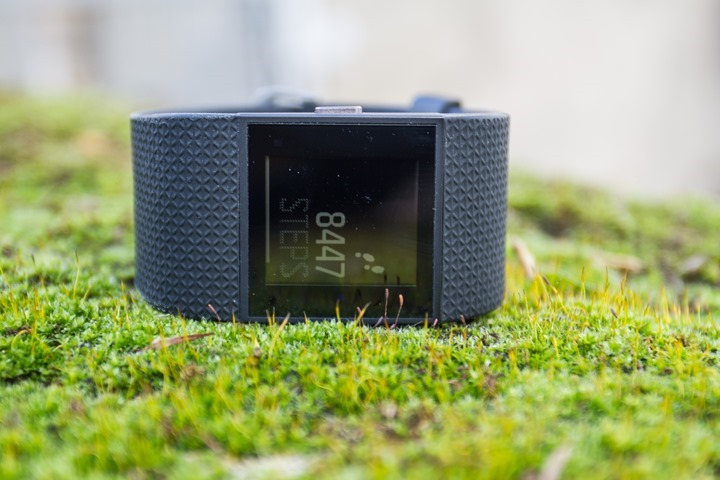
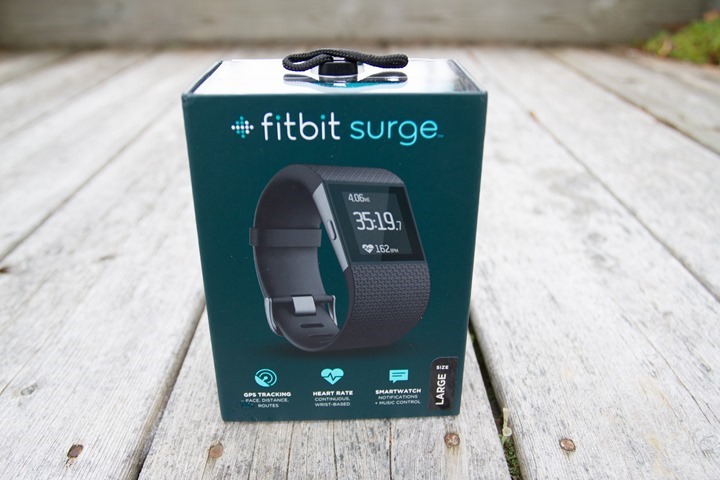
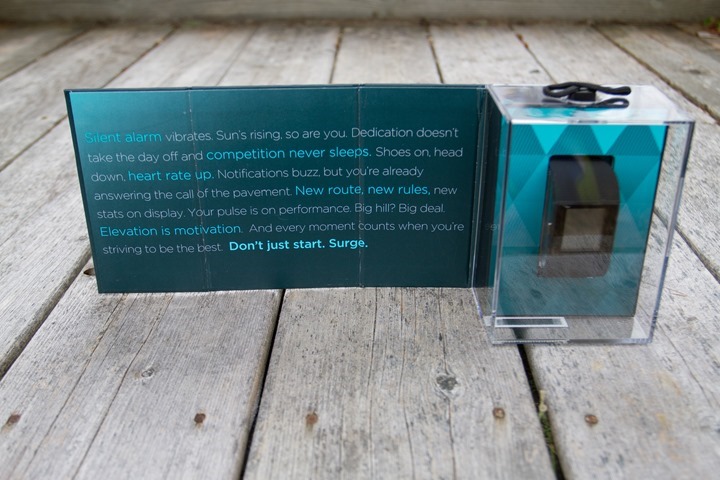

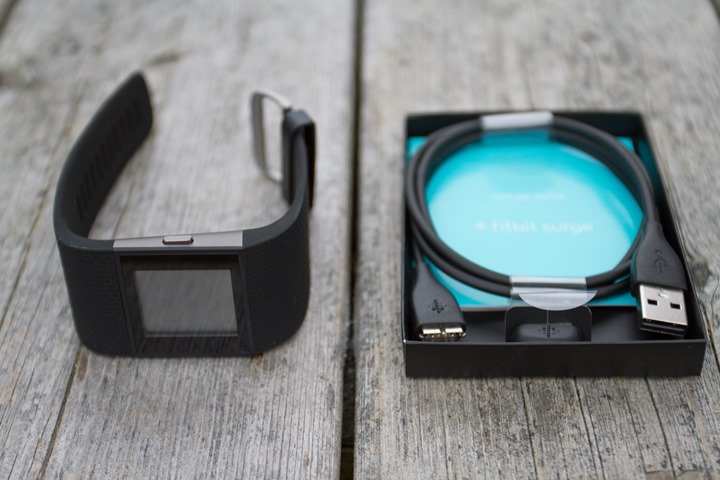
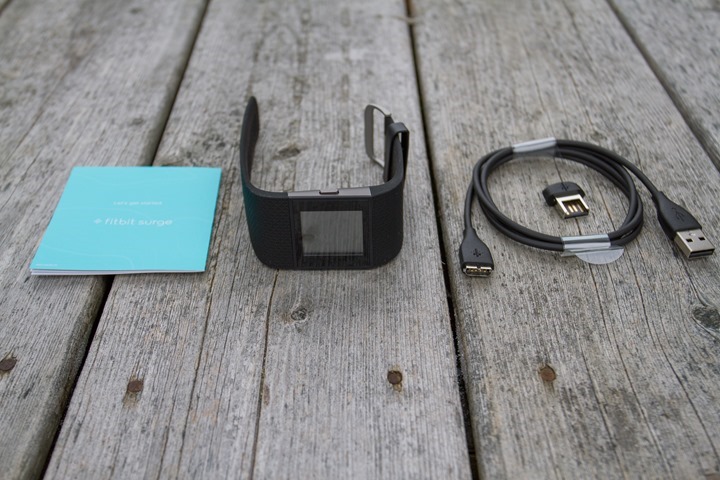
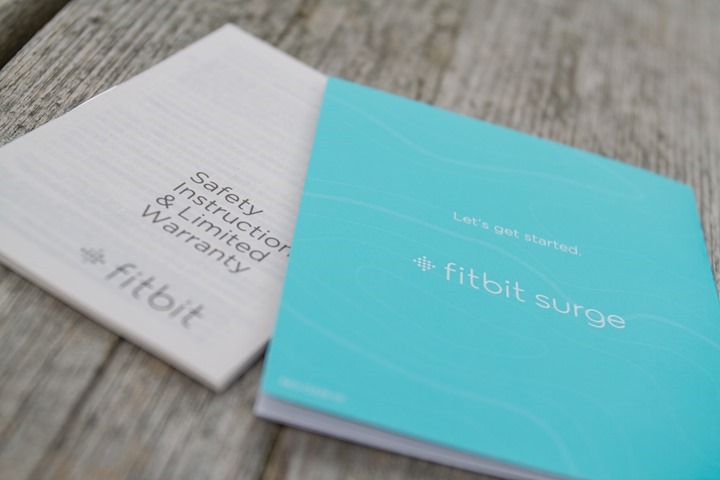
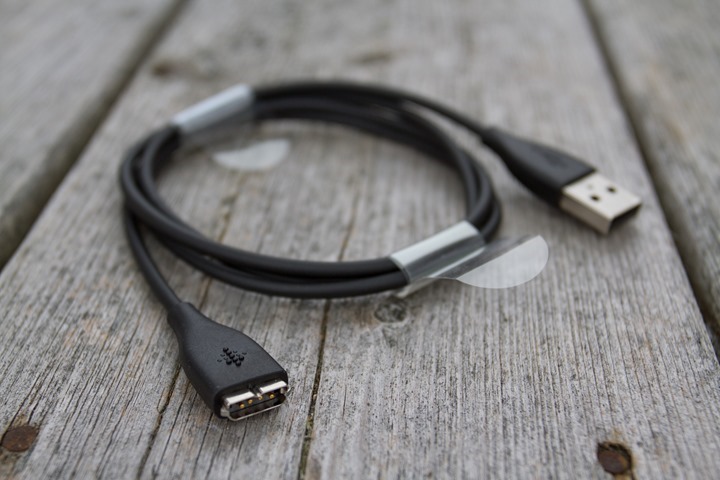
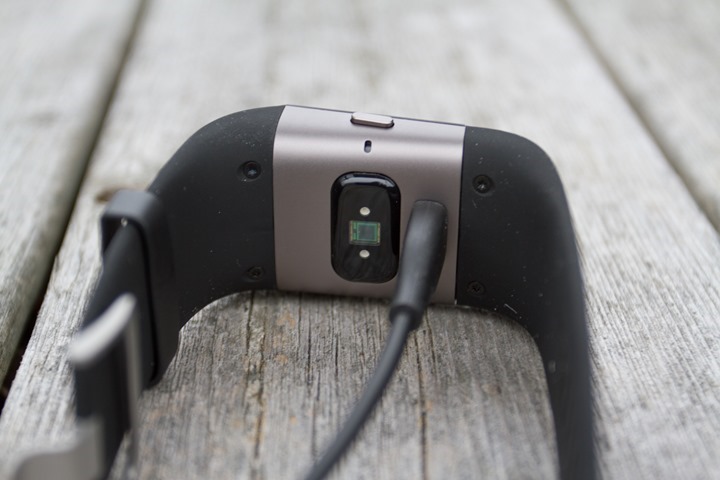
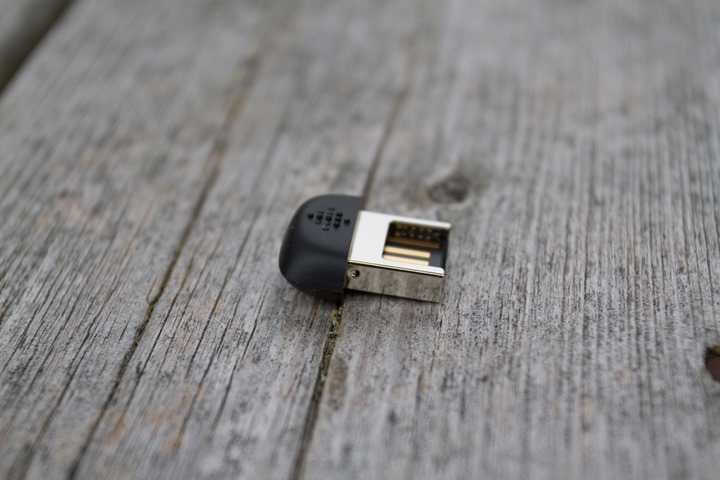

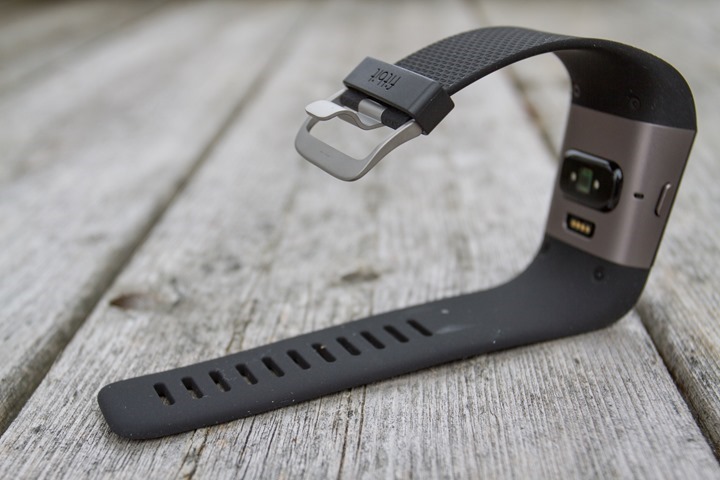
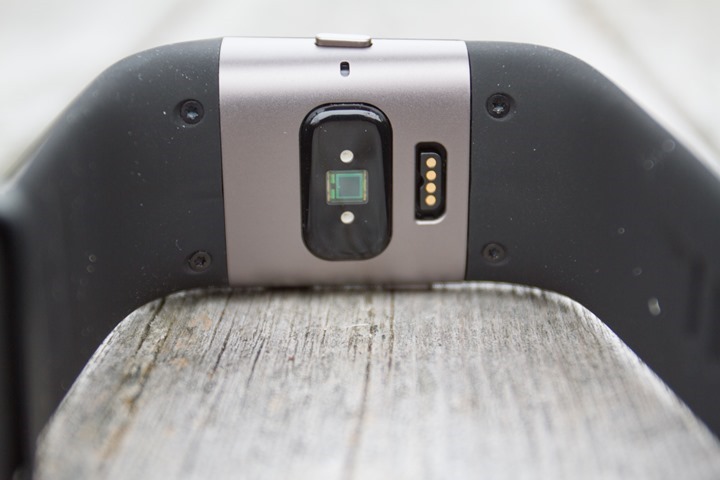
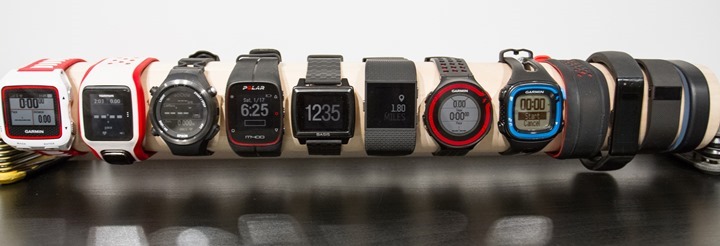
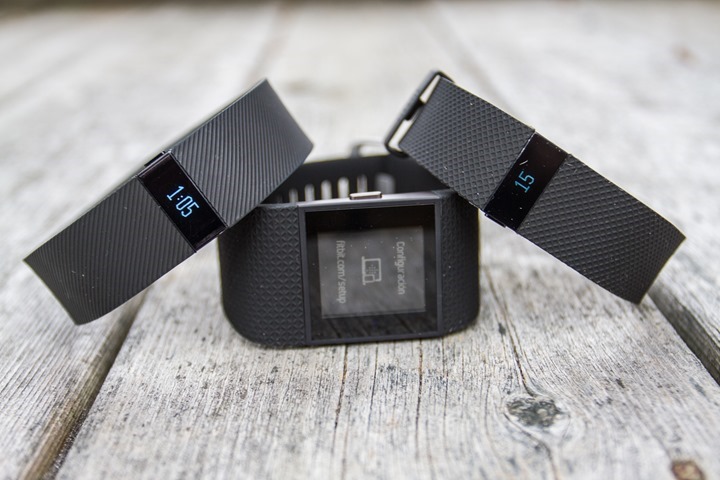

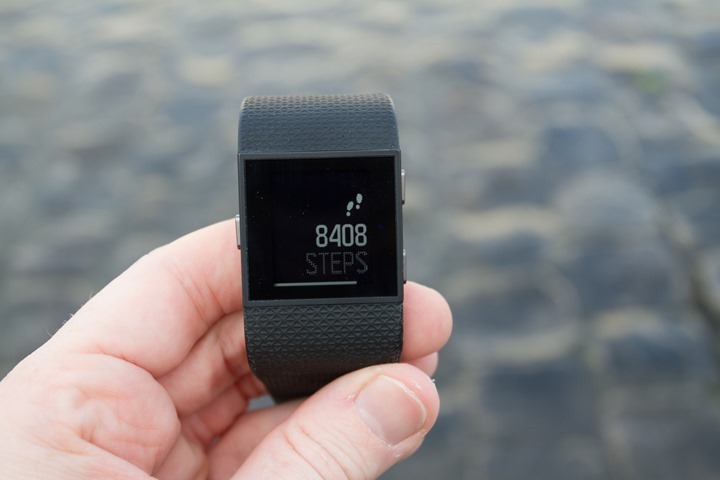
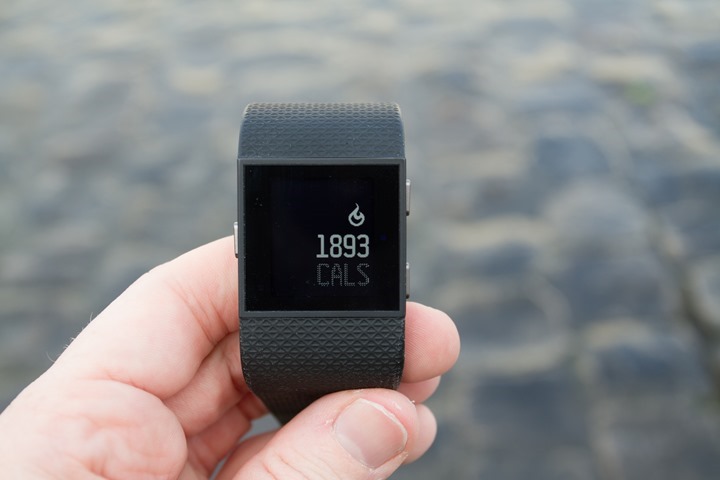
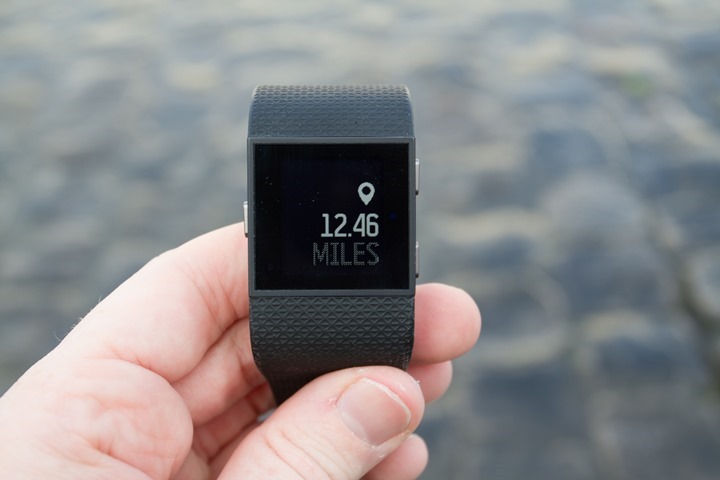
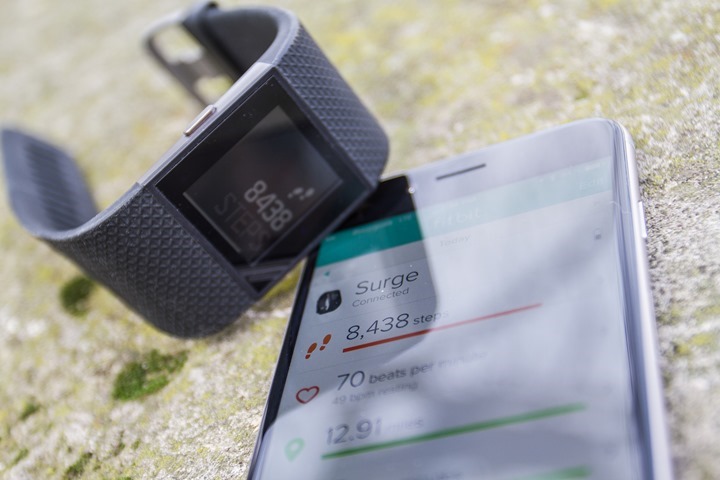
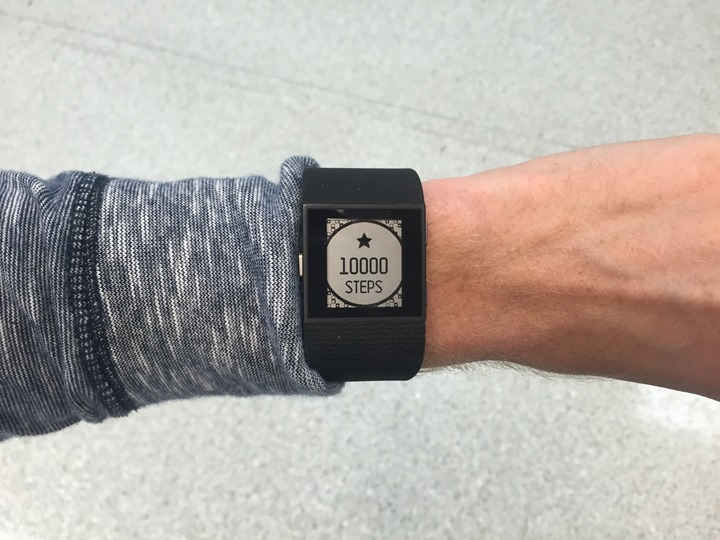
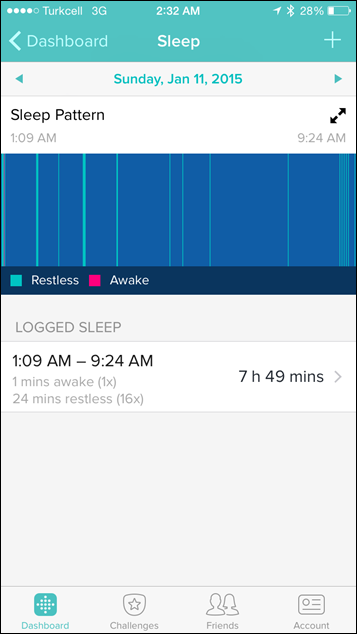
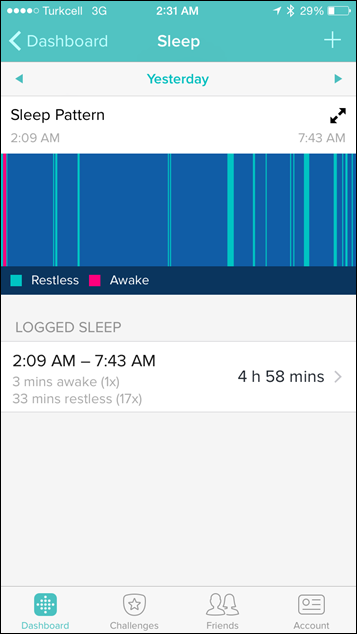

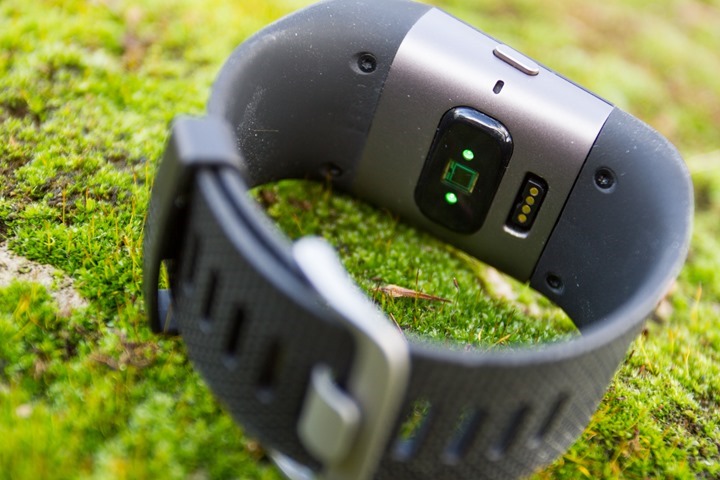
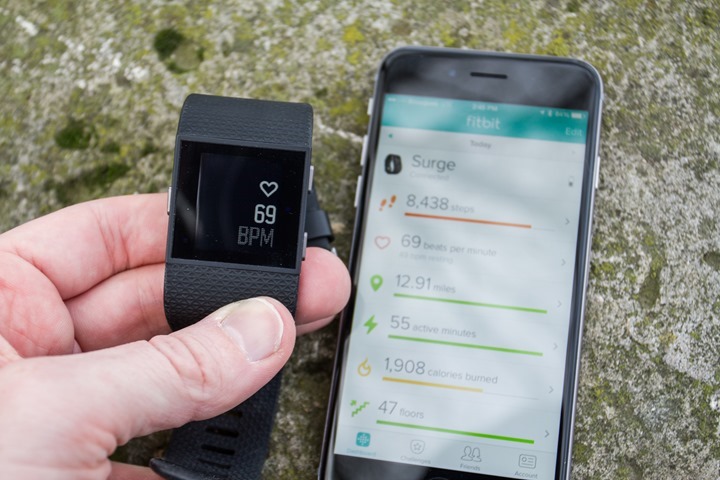
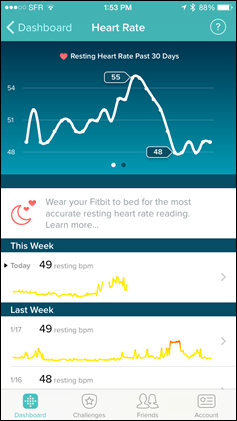
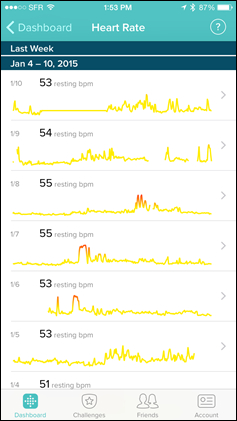
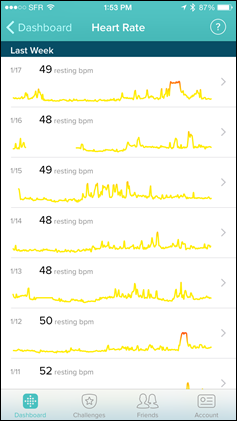
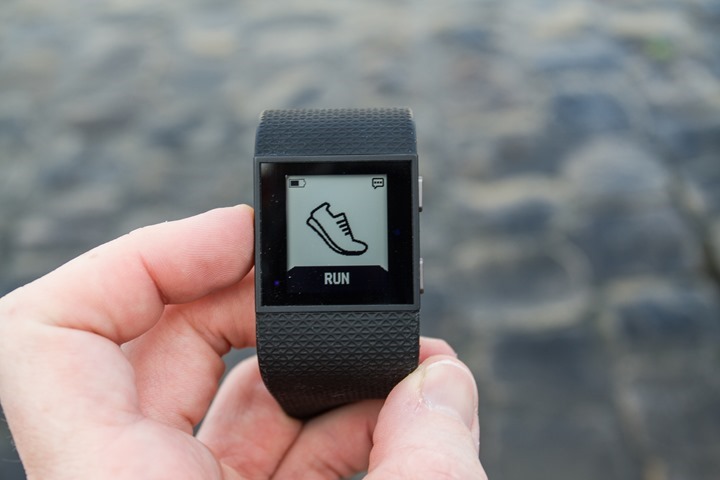


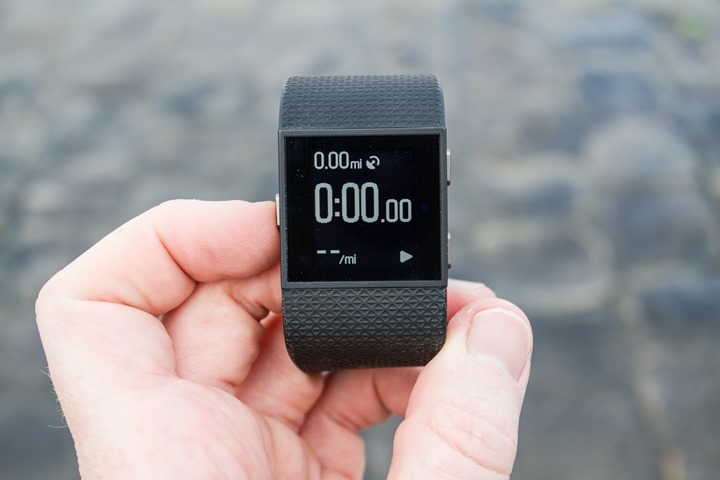
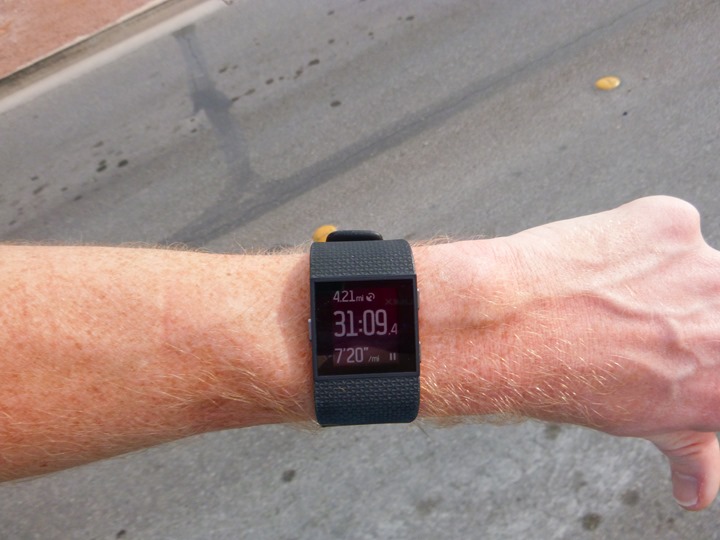
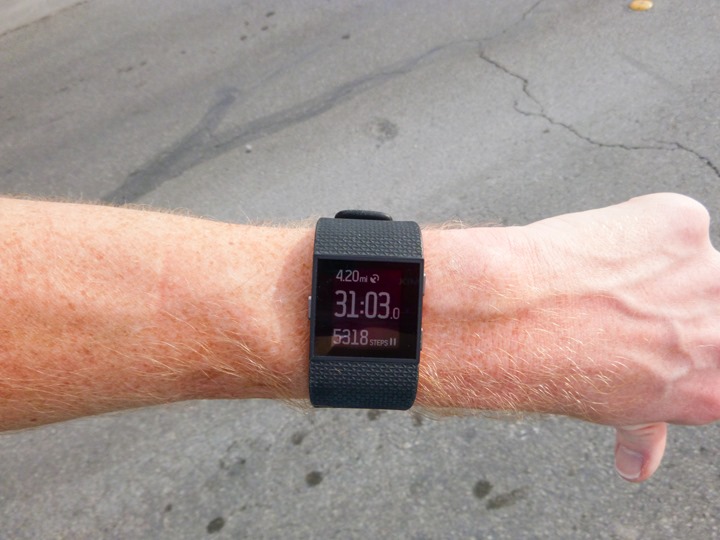
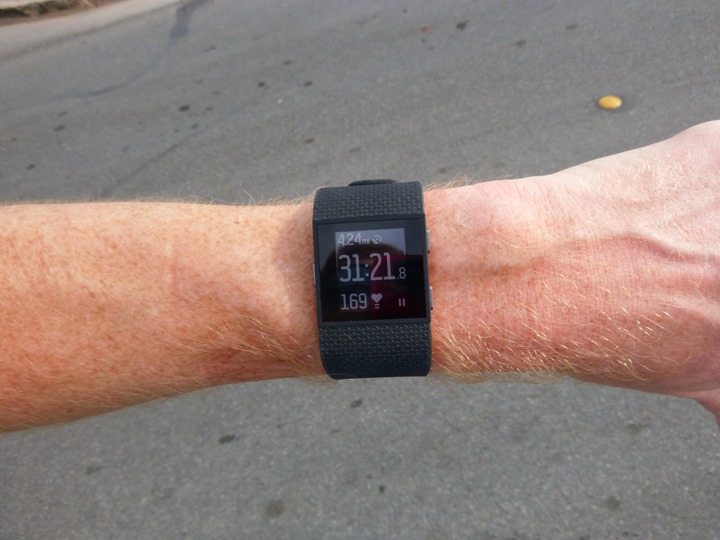
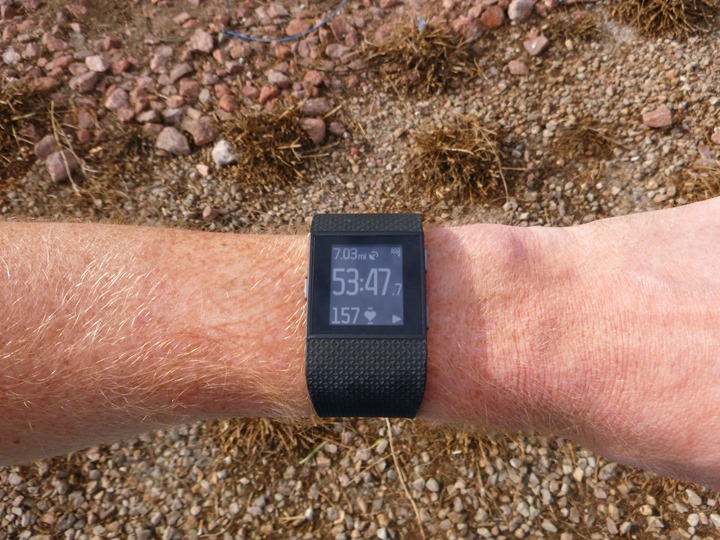
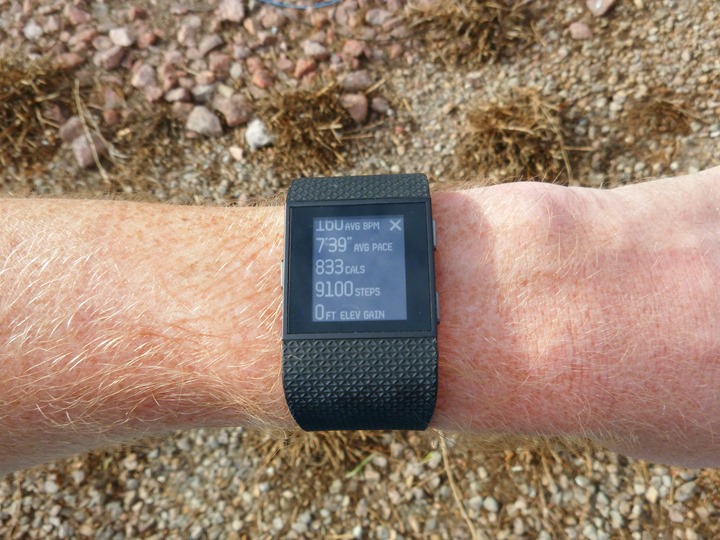
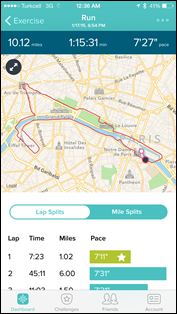
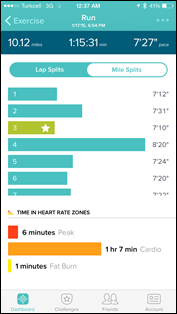
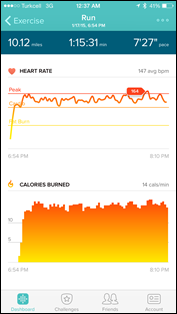
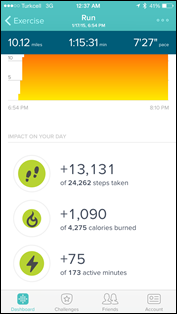


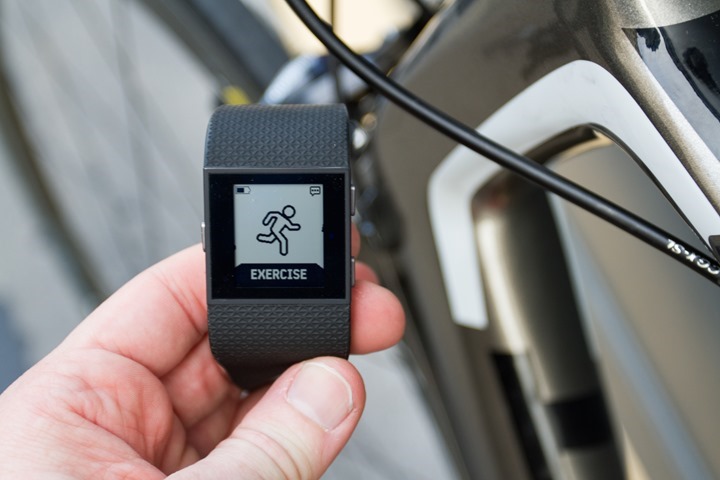
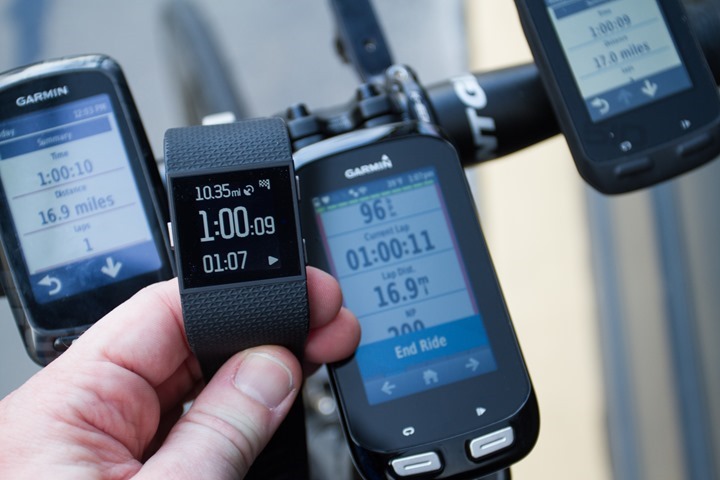



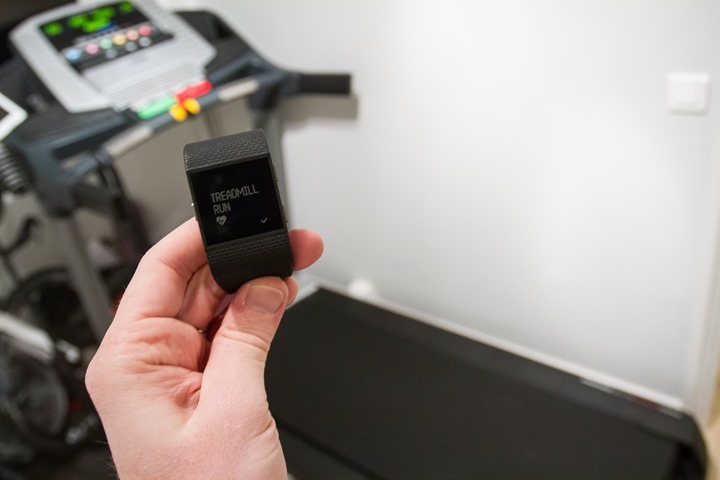

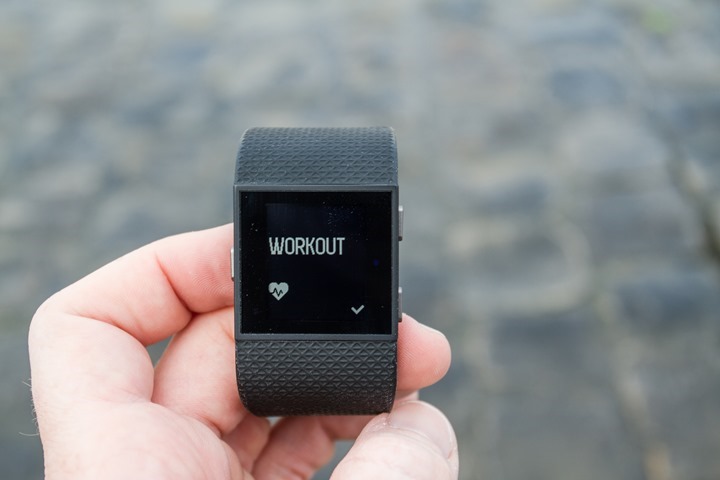
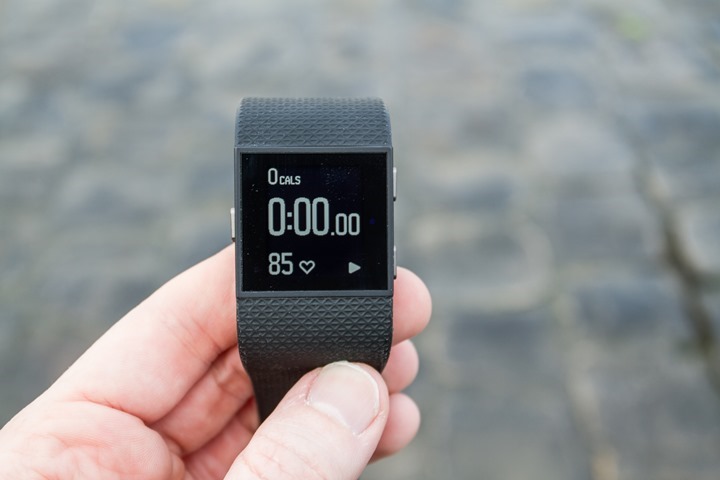
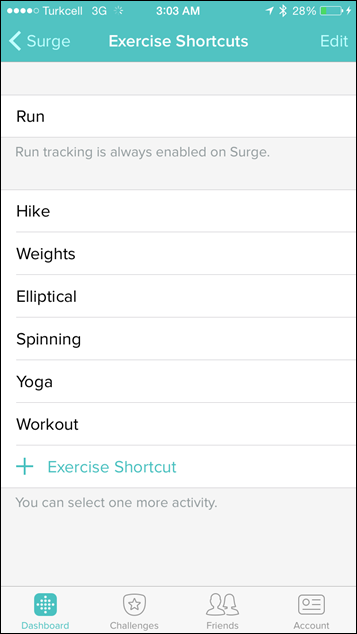

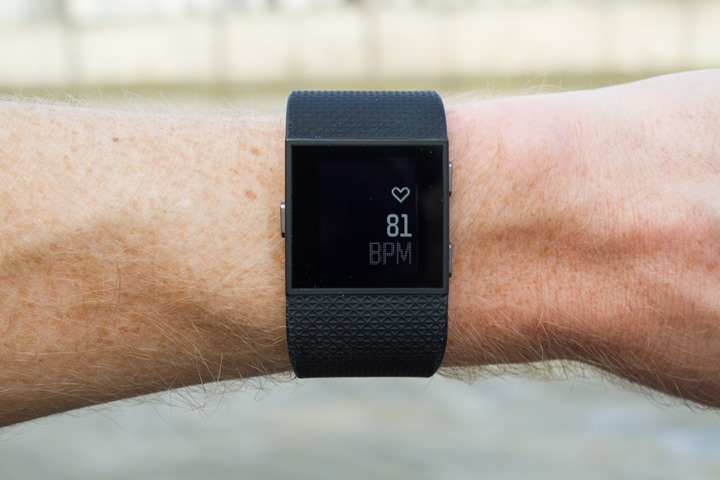











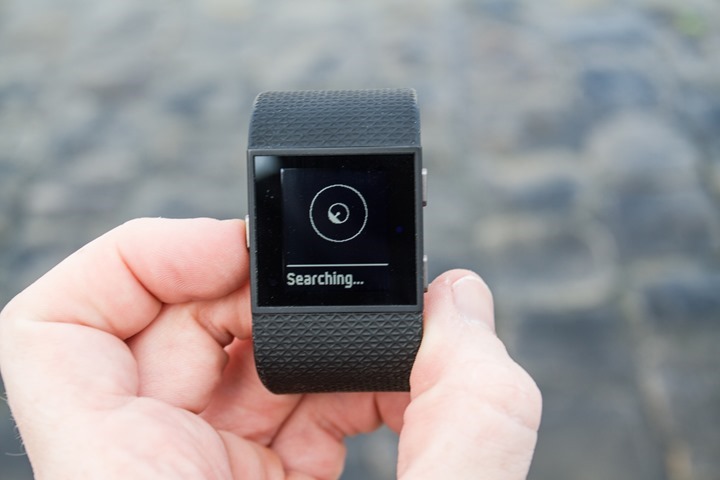




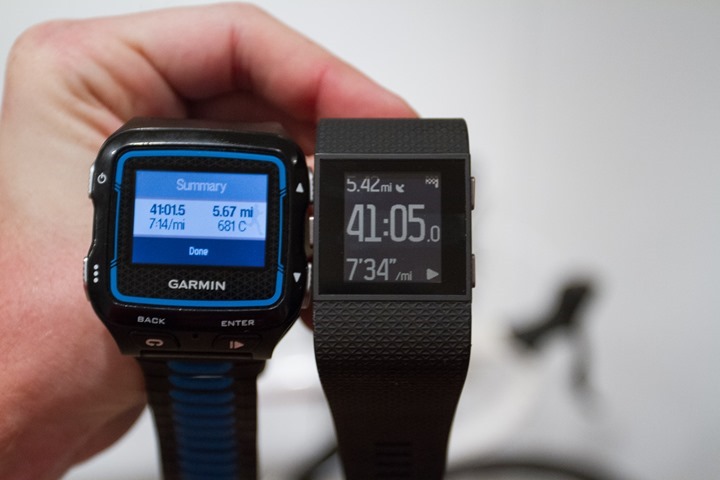
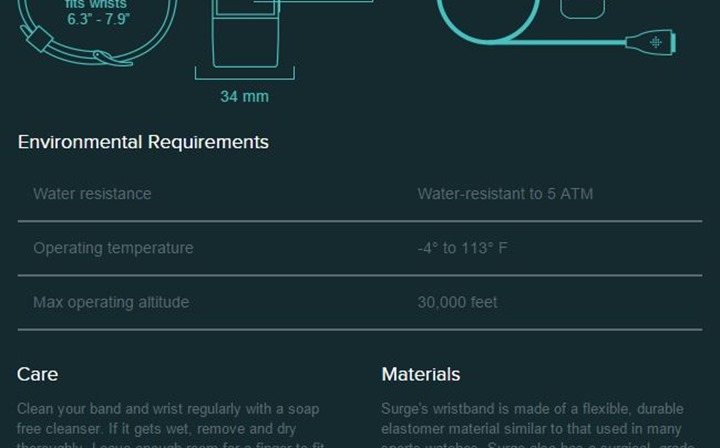



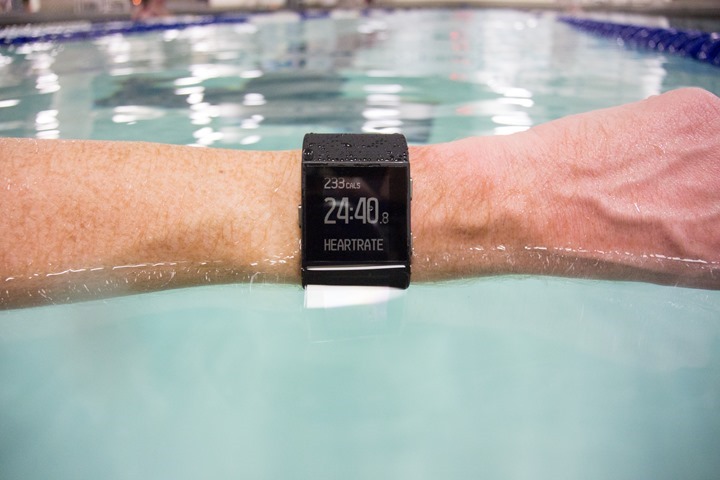
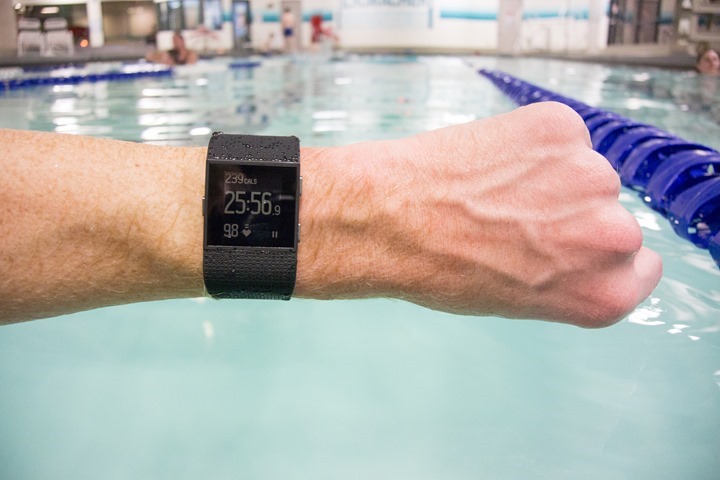
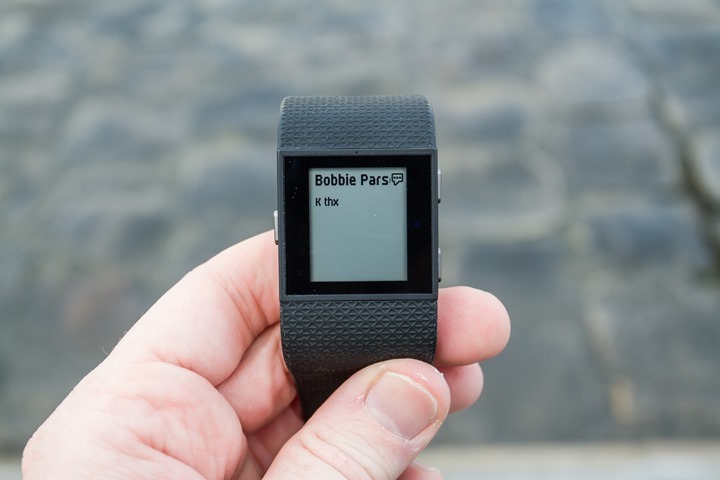
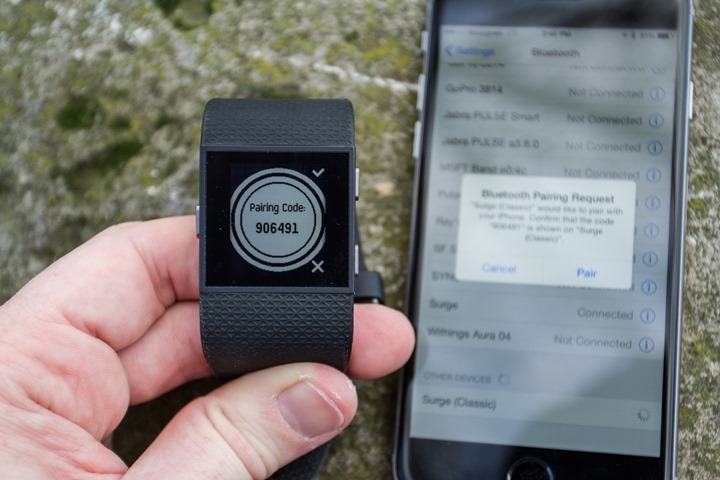
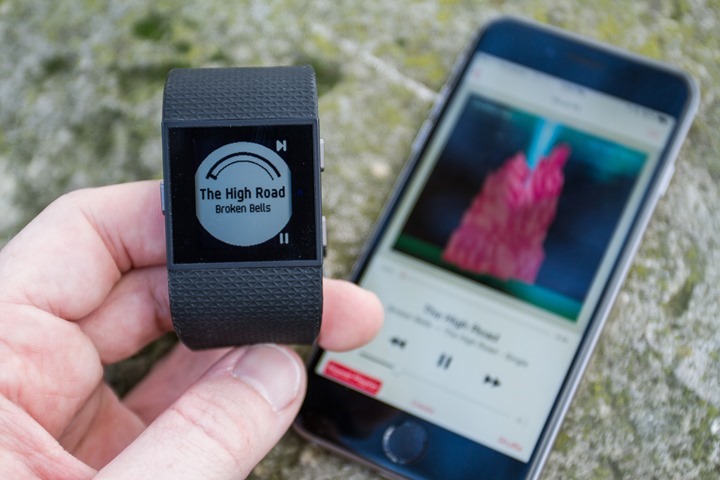
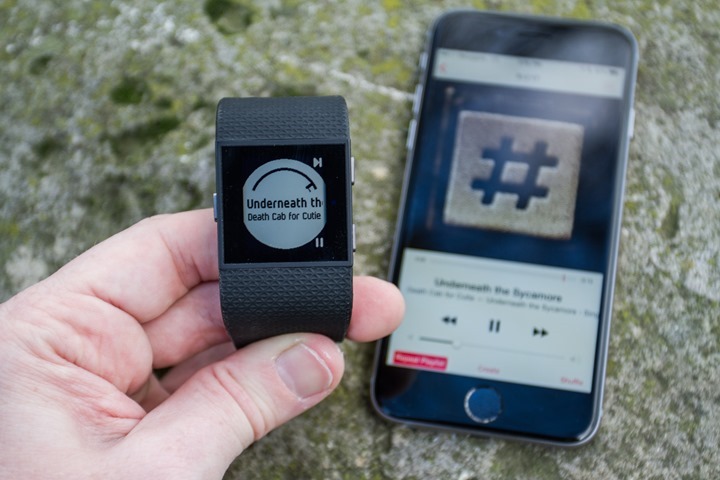
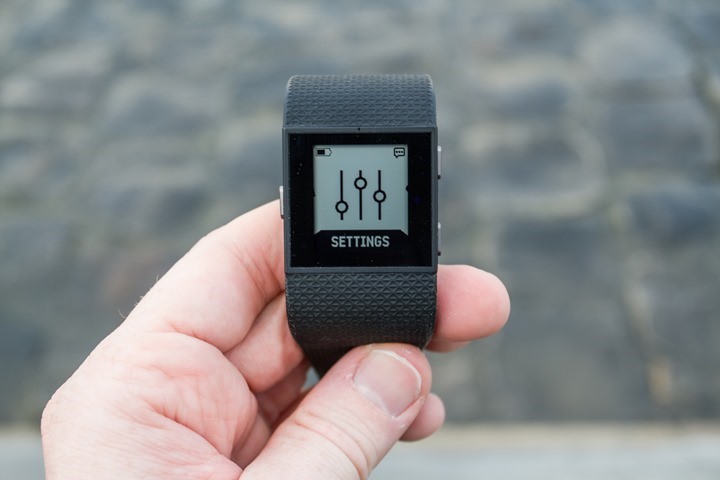
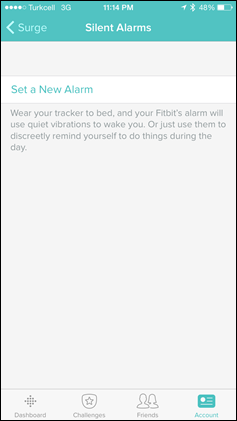
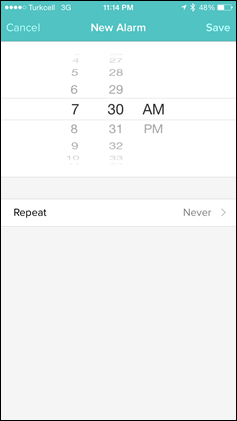
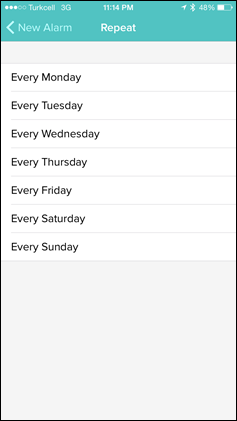
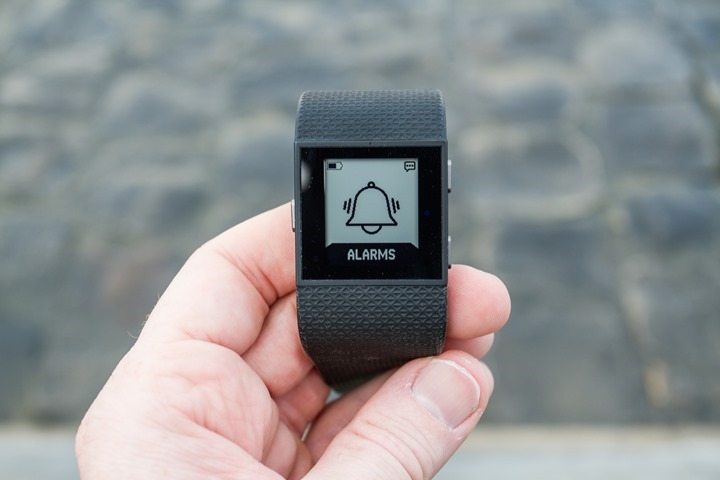
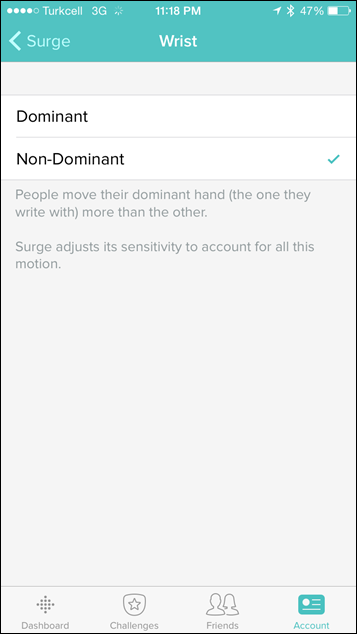
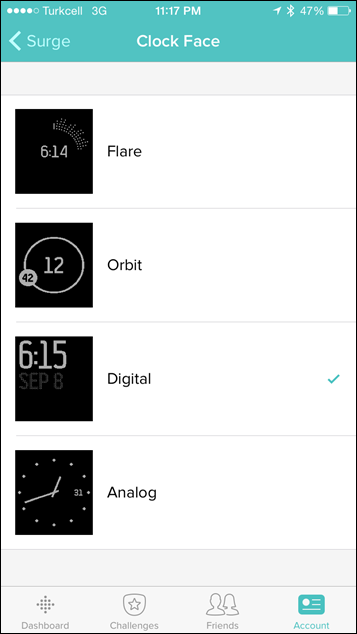
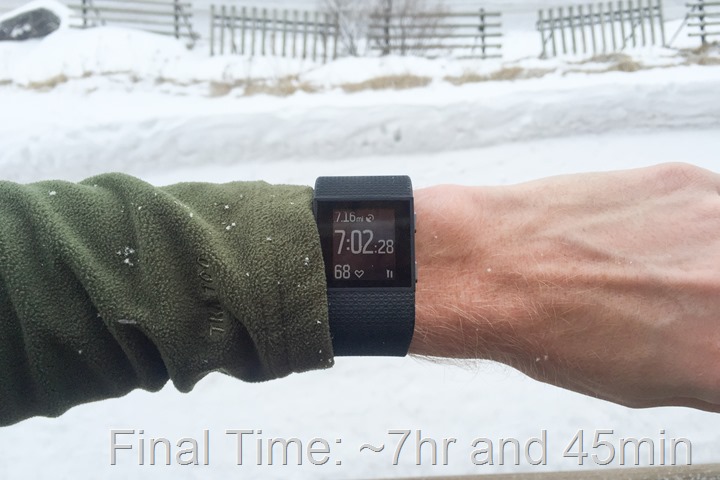

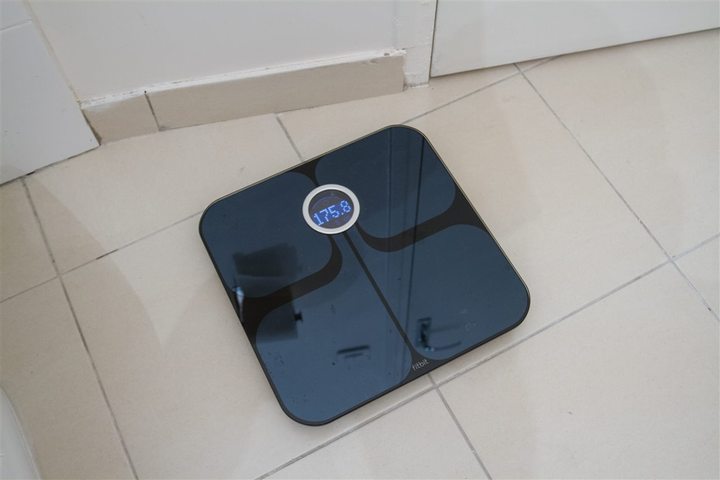
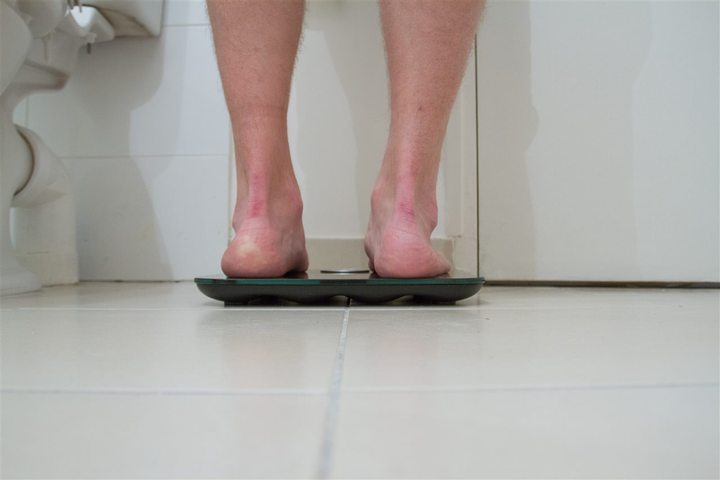
![FitbitScaleWebsite_thumb[2] FitbitScaleWebsite_thumb[2]](https://media.dcrainmaker.com/images/2015/03/FitbitScaleWebsite_thumb2_thumb.jpg)
